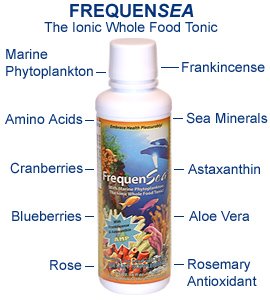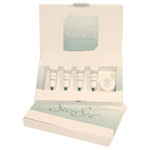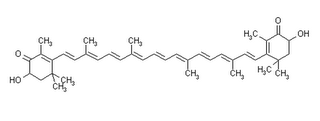Omega-3 Fatty Acids and Your Health
by Cheryl Winter, M.S.,R.D., R.N.
Overview:While you know “omega” as the last letter of the Greek alphabet,and meaning, “the end,” it is doubtful that you have heard theend about “omega-3 fatty acids.” In fact, you’ll be hearing moreand more about this long-chain fatty acid and how important itis to your health, and how American diets should be increased inthis nutrient. Isn’t FAT a Four-Letter Word?”
No!
Fat is not a bad word! It’s understandable that people havecome to believe that all fats are bad for them. For over twodecades, dietary guidance has emphasized the importance ofchoosing a diet low in fat, saturated fat, and cholesterol.
However, this is wrongly interpreted by consumers to mean thatall fat is bad and should be eliminated from the diet. In fact,omega-3 fatty acids (and omega-6 fatty acids) are buildingblocks of every living cell in the human body, and areabsolutely essential for normal health and development. Sincethe human body is unable to synthesize omega-3 and omega-6 fattyacids, and must obtain them through diet, they are called“Essential Fatty Acids (EFA’s).”
Dietary Fats 101: To have a clearer picture in understanding the classification of omega-3fatty acids, let’s review the three major categories of dietaryfats:
Saturated Fats
Monounsaturated Fats
Polyunsaturated Fats
As you probably are already aware, these three major categorieshave various effects on blood cholesterol. Saturated fats, in general, are shown to elevate LDL-cholesterol (the “bad” cholesterol), the type of cholesterol considered tobe a major risk factor for heart disease. In contrast, dietshigher in monounsaturated and polyunsaturated fats are known todecrease the “bad” LDL-cholesterol, without lowering the “good”HDL-cholesterol. In addition, when monounsaturated fats areconsumed in greater amounts, studies indicate these individualshave lower cholesterol levels.
Within the “Polyunsaturated Fats” exists two subclasess of fattyacids (the EFA’s):
Omega-3 Fatty Acids
Omega-6 Fatty Acids
Don’t We Already Get Too Much Fat in the Diet?
It would appear from our nation’s obesity epidemic that we mustbe getting too much fat in the diet. And, indeed, that is thecase. However, obesity is not just caused from excess fat, butfrom a multitude of problems, including excess calories (fromall macronutrients, not necessarily just from fat), as well asfrom inactivity. No matter what type of fat one consumes, each type has the sameamount of calories and when eaten excessively without balancing with activity, will contribute to weight gain.
However, inaddition to being concerned about getting too much fat in thediet, one needs to be concerned about the ratio of omega-6 fattyacids to omega-3 fatty acids in the diet.
Beyond the Basics:Omega-3 Fatty Acids
The principle omega-3 fatty acid is alpha linolenic acid (ALA).
A healthy person will convert ALA into), and then intodocosahexaenoic acid (DHA). In other words, ALA is the precursorto EPA and DHA, which are the omega-3 fatty acids that have thesignificant benefits (see specific foods below). So, even if we get adequate ALA in our diets from plant sources,such as flax, walnuts, soy, and canola oil, the body must stillconvert it to the important EPA and DHA. EPA and DHA, however,are found primarily in fish and fish oils, and when these foodsare consumed, the body does not have to convert them.
The important omega-3 fatty acids, then, for health are:
ALA
EPA
DHA
Omega-6 Fatty Acids
Linoleic acid is the principal omega-6 fatty acid, and it isabundant in most cooking oils, including sunflower, safflower,soybean, and corn oil and processed foods. A healthy person will convert linoleic acid into gamma linolenic acid (GLA), which isthen synthesized with EPA from the omega-3 fatty acid group,into eicosanoids. Eicosanoids are hormone-like compounds thataid in many body functions, and promote heart health bypreventing blood platelets from clotting and sticking to theartery walls---effects that are similar to those observed with aspirin. Decreased clotting helps reduce the chances ofblockages in an artery and thereby decreases the risk for heartattack or stroke. Eicosanoids also play a role in the reduction of inflammation, significant in heart disease, as well as otherdiseases like arthritis, lupus, asthma, diabetes.
However, in addition to the GLA that is produced from linoleicacid, GLA is also further metabolized to arachidonic acid, which has been shown to have properties of increased inflammation and increased clotting, thereby having potentially negative effects on health.
These potentially negative effects, however, are minimized, if omega-6 fatty acids are in the proper amounts. When the amounts of linoleic acid (omega-6 fatty acid) are too high, the conversion of ALA (omega-3 fatty acids) to the EPA (the biologically active form of omega-3 fatty acids), is reduced, and more of the GLA is used to make the more harmful arachondonic acid, than is used to make the more beneficial EPA.
As complicated as this sounds, this is a very simplified explanation of the process. To overcome the potential negative effects of the arachidonic acid, supplementation with GLA-rich foods such as borage oil, black currant seed oil, or evening primrose oil, has become popular. However, this is very controversial, with no scientific evidence to support it, and could be harmful, since GLA iseventually converted to arachidonic acid, thereby, defeating the purpose.
Therefore, extreme caution should be used with these products.
How Much of the Fatty Acids do We Need:
Why are our diets too high in omega-6 fatty acids and too low in omega 3-fatty acids? Human beings evolved consuming a diet that was much lower insaturated fatty acids than is today’s diet. Furthermore, the diet contained small and roughly equal amounts of omega-6 and omega-3 fatty acid (ratio of 1-2:1) and much lower amounts of trans fatty acids than does today’s diet.
Contrast this to themodern American diet in which the ratio of omega-6 to omega-3 fatty acids is greater than 10:1, partially due to the indiscriminate recommendation to substitute omega-6 fatty acidsto lower serum cholesterol concentrations.
In addition, intake of omega-3 fatty acids is lower todaybecause of a decrease in fish consumption, as well as to the mass production of omega-6 oils like corn, safflower and peanutoil, which are widely consumed in our food supply. Our farm animals are fed with grain (as opposed to greens in the wild)and yield meat and eggs also high in omega-6 fatty acids. This also includes farm raised fish which are fed grains. Even cultivated vegetables contain fewer omega-3 fatty acids than do plants in the wild.
Modern agriculture, with its emphasis on production, has decreased the omega-3 fatty acid content in many foods. Cardiovascular benefits derived from the consumption of the marine omega-3 fatty acids were first noticed during epidemiological studies in the Greenland Inuits, an Eskimo population that consumed large amounts of traditional marine mammals and fish, and had little mortality from coronary artery disease.
EPA and DHA are found to be in abundance in cold-waterfish, such as salmon, trout, mackerel, and tuna. Fish do notmake these fats but obtain them from the plankton they eat; the colder the water, the more omega-3’s the plankton contains.
Plain English, Please!
This is obviously a very complicated subject, and scientists continue to study and discover new linksto how fats affect our health.
In the mean time, here is thebest available nutritional advice, in regards to the omega-3fatty acid issue: Although we need to increase the amount of omega 3-fatty acids in the diet (from plants and fish), this will not be totally effective without decreasing the amount of omega-6 fatty acidsin our diet, especially if only plant based omega-3 fatty acids are consumed. Too much omega-6 fatty acid will inhibit the conversion of plant-based ALA to EPA, thereby reducing the fullbenefits of the omega-3 fatty acids. This is more of an issue for vegetarians who do not eat fish, however.
To some degree, by increasing omega-3 fatty acids, you will be decreasing your intake of other fats. It is still recommended by health-promoting organizations, such as the American Hearth Association to: Limit harmful saturated fats found in animal products, such as full-fat dairy products like whole milk, ice cream, hard cheeses, as well as cakes and cookies, and fried foods. Limit total fat to approximately 30% of caloric intake.
The good monounsaturated fats, such as found in foods like olives and olive oil, canola oil, avocados and nuts, continue to beessential in our diets.
Because omega-6 fatty acid is still an essential fatty acid, itshould not be totally eliminated, but its intake can be limitedby reducing the intake of processed foods, such as crackers,chips, cookies, cakes and fried foods.
The minimum healthy intake for both omega-3 and omega-6 fattyacids per day in adults is 1.5 grams of each. One tablespoon offlaxseed oil can provide this amount, or larger amounts of otheromega 3- fatty acid-rich foods can be consumed.
The best scientific evidence suggests an intake of omega-3 fatty acids ofat least 650 mg per day. There is strong evidence that consuming considerably more than 650 mg per day provides even more health benefits.
The average American diet contains less than 200 mg per day of the omega-3 fatty acids EPA and DHA.
Omega-3 FattyAcids Rich Foods:
Plant Products (high in ALA)
flaxseed
tofu
walnuts
canola oil
wheat germ
green leafy vegetables (spinach, mustard greens, purslane, collards)
Animal Products (high in EPA & DHA)
salmon
herring
mackerel
bluefish
sardines
albacore
tuna
halibut
Benefits of Omega-3 Fatty Acids:
•promote cardiovascular health
•increase memory and learning ability
•helps brain & visiondevelopment of infants
•decreased development of age-relatedmacular degeneration (AMD)
•reduces risk of stroke andhyptertension •improves regulation of heartbeat
•helps boostimmune system (defends against cancer)
•promotes natural jointflexibility and mobility (decreases rheumatoid arthritis)
•reduces symptoms of depression
•reduces risk of dementia, e.g.Alzheimer’s disease
•reduces the amount of triglyceridesreleased into blood
•increases HDL levels
Other Important Facts:
•Eating two to three, 3-ounce servings of fish per week issupported by the American Heart Association, with at least twoservings from fish high in EPA and DHA
•Avoid fish with potential high levels of toxins and pay attention to advisory warnings for eating fish from questionable waters
•Children andpregnant and lactating women should consume fish with caution due to risk of mercury intoxication
•Fish oil supplements are NOT to be used in place of eating the actual food
•Studies showthat eating as little as one serving per week of “fatty” fish can reduce your risk of cardiac arrest by 50-70%
•Since omega-3fatty acids inhibit blood clotting, supplements should not beused by those who have blood clotting disorders or byindividuals taking anticoagulant medications
•Most vitamins andmost herbal supplements do not contain any omega-3 fatty acids
•The positive benefits seen with omega-3 fatty acids generallyoccur with continued use of greater than 12 weeks
•Do not useflaxseed oil for cooking (heat destroys the EFA)
•Flaxseed ispreferable to flaxseed oil because of the healthy lignans andfiber content, not available in flaxseed oil.
-=-=-=-=-=-=-= -=-=-=--=-=-=-=-=-=-=-=-
Cheryl Winter, M.S., R.D., R.N. is a RegisteredDietitian/Nutritionist, Registered Nurse and ACSM FitnessInstructor. Cheryl is owner and operator of HealthSteps Rx, Inc.at
http://www.HealthStepsRx.com a wellness organization that will help you Build a Better Life…One Step at a Time. Learn all about HealthSteps Rx, Inc. Weight Management Programvia TeleClasses, without leaving your home or office:
http://www.healthstepsrx.com/services/online/steppower.htm -=-=-=-=-=-=-=-=-=-=-=-=-=-=-=-=-=-=-=




